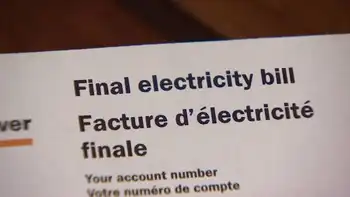Power and politics are entwined in Ontario
By Toronto Star
NFPA 70e Training - Arc Flash
Our customized live online or in‑person group training can be delivered to your staff at your location.

- Live Online
- 6 hours Instructor-led
- Group Training Available
This policy has resulted in the doubling of rates in Ontario to a level higher than in most U.S. states. Ontario's former industrial advantage has disappeared, while the government has been pretending that nothing is wrong.
Now it has issued its "Long-Term Energy Plan" LTEP that addresses some of these problems but still makes major mistakes.
In 2003, it was decided to begin closing all coal-fired generation plants, without having any plan to replace the lost generation. Closing the three large coal plants — Lakeview, Nanticoke and Lampton, with a total generating capacity of about 8,000 megawatts — stimulated the decision to go green with environmentally friendly renewable sources such as water, wind, solar and biomass.
The government ignored the fact that cleaner coal options were available and that coal generation was reliable 24/7. Wind and solar are intermittent — when the wind blows and the sun shines.
And the green initiative also required high capital investment, so money was committed to pay for energy from windmills and solar panels, with the cost added to your hydro bill.
The government's electrical power problem today has three major aspects: demand, supply and cost.
The economic recession of 2008 reduced demand, providing the government with time to make decisions on major new generation. Overall, load dropped 20 per cent in 2008, led by the forest industry down 60 per cent and mining down 40 per cent. In 2010, we are seeing some recovery. The October 2010 industrial load was up 4.4 per cent over October 2009. The announcement in Sudbury by Vale-Inco of a multi-million-dollar investment means new jobs and the beginning of recovery in the mining sector — and new load for the power system.
In the province's latest economic statement, electrical growth is forecast at one half of 1 per cent per year for the next five years. But the Ontario economy is heavily reliant on exports to the United States, such as lumber for housing, so the demand for power could increase in Ontario if the U.S. housing sector bounces back and there is a general economic recovery.
Other segments of the load are increasing as well. New schools, hospitals, condos and office buildings all have air conditioning and other power demands. Immigration adds new power consumers.
The government could be very wrong about growth — but it is certain that your electricity rates will go up 46 per cent in the next five years.
Turning to supply, the decision to shut down coal generation for environmental reasons was made in haste, without considering alternatives or the problems that result from providing replacement power. In Europe, coal gasification has become a major source of supply. Called "cleaner coal," it results in lower emissions — much less than what blows over Ontario from Ohio Valley coal plants. If coal plants were converted to cleaner coal, existing transformer stations and transmission lines could still be used.
The program for new low-emission gas turbines requires sites that can accommodate new transformers and transmission lines and have a convenient gas supply. These new sites are a major problem, as the government learned when it had to cancel a plant in Oakville because of community anger. The government will have to settle with TransCanada PipeLines, which had a contract to build and operate the plant for 20 years. Millions of dollars will be paid for liability costs - all on your hydro bill.
With the new LTEP, however, the government has suddenly seen the benefits of existing stations. While Lakeview was demolished, and no consideration given to using gas turbines there, the new policy sees merit in "continuing the use of existing electricity generating assets." Natural gas and biomass are mentioned.
When the government committed itself to encouraging wind and solar power, it authorized the Ontario Power Authority to buy wind and solar energy at rates up to 10 times higher than the selling price of conventional energy. This major investment for wind and solar power, hidden in your hydro bill, produces very little energy.
In 2010, projected use is 142 terawatt hours TWH - 1 terawatt hour equals 1 billion watt hours. But the installed solar panels will supply only 2 TWH and windmills 10 TWH, or only 7.8 per cent of the projected supply. And wind isn't dependable the system is supplied with power only when the wind is blowing. On a very hot afternoon in June, when we all turn on our air-conditioning units, we have a system peak. The records show there is very little wind on these hot days. We are paying a high capital cost that contributes very little when help is most needed. Does this make sense?
In the LTEP, the emphasis is still on creating capacity megawatts with no mention of the delivery of energy in megawatt hours. Additional capacity is useless if energy is not delivered when the customer needs it.
On the other hand, the government has seen the benefit of new hydroelectric supply with plans to increase capacity to 9,000 megawatts, up from the existing 6,000. This water power can deliver energy 24 hours a day and is very good for adding capacity and energy delivery at peak times.
As for costs, until November 18 all the costs of the green energy program were buried in your hydro bill. Now the government is trying to make you feel good by cutting hydro bills by 10 per cent. But you will still pay these costs — on your tax bill.
The electrical power bill has more than doubled under the McGuinty plan because of all of the green projects. But feel-good green energy initiatives won't help Ontario industry. It needs lower power rates to keep costs under control and maintain jobs.
The government ignores this problem and says green power is good for the environment — forget about the cost and pay your ever-increasing hydro bill. The voters will send Premier Dalton McGuinty an answer on election day 2011.











